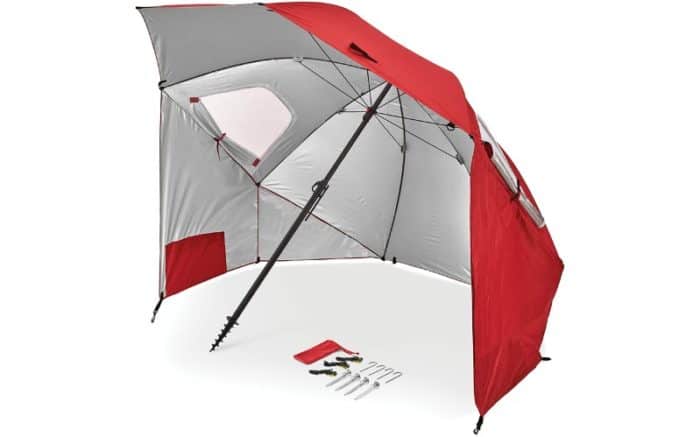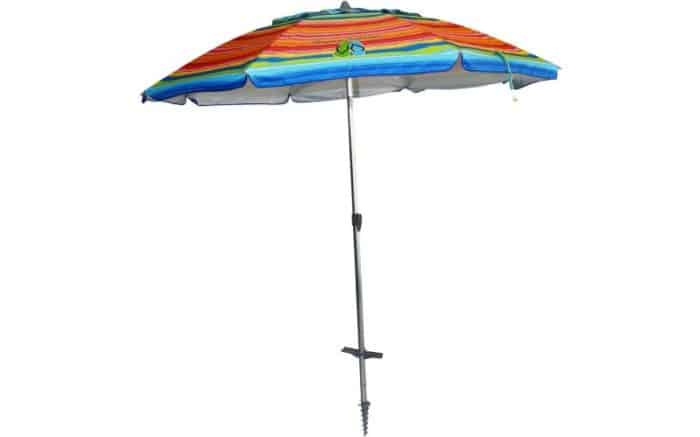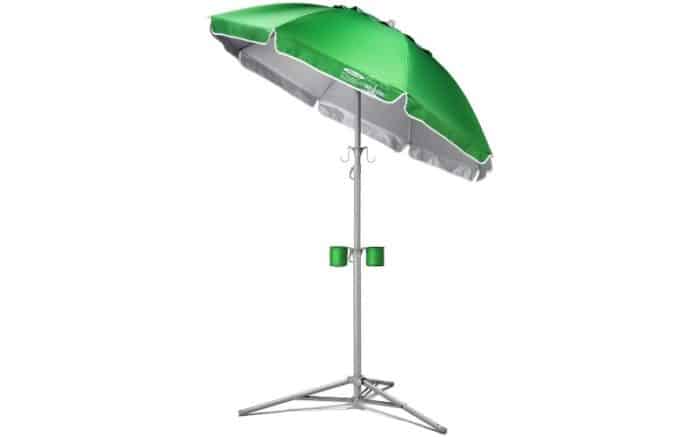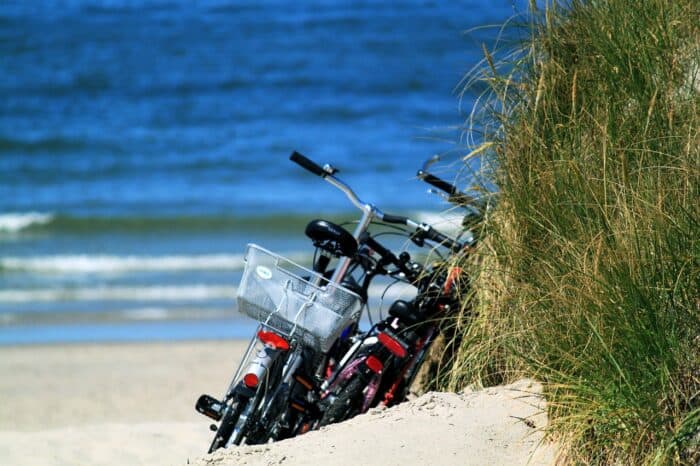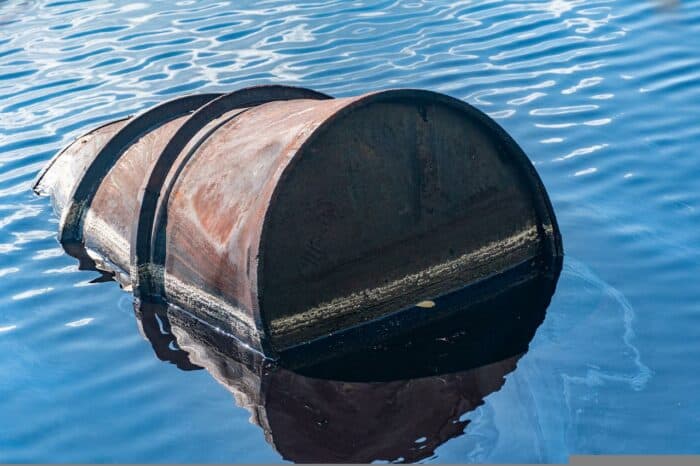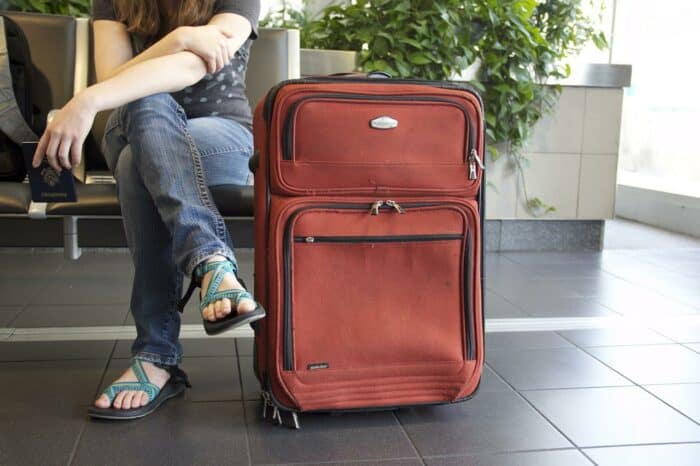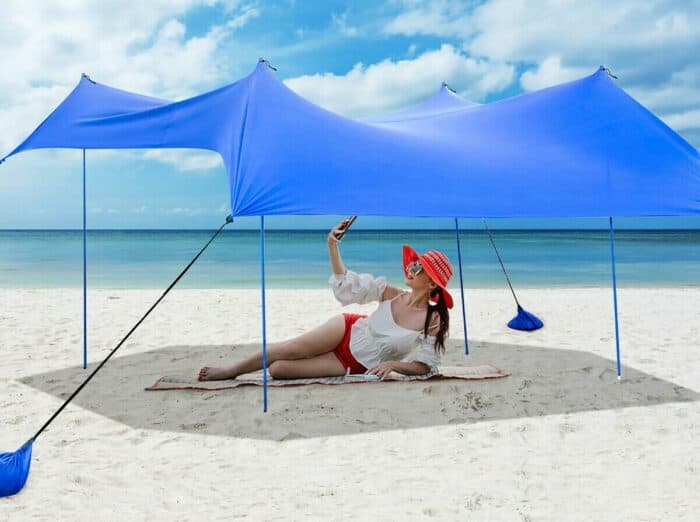How Set Up a Beach Umbrella in the Sand
Getting a beach umbrella in the sand is easy, right? That’s what everyone thinks before they have to do it. But don’t kid yourself, setting up a beach umbrella is not a simple one and done. And don’t feel embarrassed if you have trouble with it, either. This is a major problem for a lot of people. You have a large canopied device out in a windy, open space. Keeping an umbrella rooted in place takes strategy and some skill.
If you spend any time at the beach, you know how difficult these things can be. There’s a good chance that if your umbrella hasn’t gone flying, you’ve seen someone else’s do it. That umbrella pole and the sand anchor can become a spear in the right conditions. That’s bad news.
Let’s take a look at just what the problem is with getting an umbrella in the sand. Unlike a beach tent or canopy, these have some unique issues. We’ll show you how to use a little more elbow grease to install the umbrella securely. It’s all a part of beach safety and making sure everyone has a good time.
The Danger of Beach Umbrellas
This seems silly to people who have little experience with beach umbrellas. They’re dangerous. How could an umbrella be dangerous, right? Well, consider what we’re dealing with. The pole on many beach umbrellas is six or seven feet long. The canopy can be seven or more feet across. That makes a very wide surface to be picked up by the wind. And the sand anchor on many beach umbrellas is a long, sharp spike.
Imagine a gust of wind picks up at 50 miles an hour and pulls the umbrella out of the wet sand. What you have is, like we said earlier, a spear. A long pole, a spiked tip, and a high velocity. In 2018, the Consumer Product Safety Commission looked into the issue. It was reported that around 3,000 people per year had to go to the emergency room thanks to umbrella accidents.
In the summer of 2018, a 54-year-old woman in Ocean City, Maryland, was pierced right in the chest by a flying umbrella. Fortunately, the injuries did not prove fatal, but the fact is, she was still impaled on an umbrella. Imagine how terrifying that must have been, not to mention painful.
Keep in mind, families are at the beach. So while maybe a runaway umbrella won’t hurt an adult, there are children around as well. A small child with their back turned to a fast moving umbrella could get seriously injured. For that reason alone, it’s important to make sure you know how to properly install a beach umbrella. That means using the right umbrella. It also means paying attention to things like the direction of the wind.
Pick the Right Umbrella
So what does it mean to choose the right umbrella? There are a lot of choices out there. We have some recommendations. These are the best beach umbrellas you can buy, in our opinion. Check out our reviews and see which umbrella best meets your needs. You’ll notice each of our choices covers how it’s anchored in the sand for safety. Other benefits are also detailed to make your choice easier. But choosing the umbrella is just the start. Once you have it, you need to know what to do with it.
How to Secure a Beach Umbrella Pole
Understanding how to secure the pole at the right angle is key. That way, you can still enjoy the shade you want on a sunny summer day. But you’re not in danger of losing the umbrella or hurting anyone.
Before you get your umbrella in gear, make sure it’s closed. A large number of people will try to plant an umbrella after it’s been opened. The base will still go into the ground, it’s just so much more awkward. Keep it closed until it’s fully set up. It’s also less likely to fly out of your hands if there is a breeze this way.
If your umbrella pole is in two pieces, secure the base first. You can add the top with the canopy in just seconds once you’re happy with the position.
Once you’re ready, don’t just stab the beach. This is very tempting. Most umbrellas have that sand spike anchor. Your instinct is to stab it in like a stake and leave it. But don’t! That’s not secure. Start by stabbing it in, and put your weight into it. But once you have it down, you can’t just leave it.
Instead, work it into the sand. Using a back and forth rocking motion. You need it deeper than you think. You’ll end up creating a little pit around the umbrella as it digs into the ground. You should be a good foot or two into the sand at this point.
If your umbrella came with instructions, make sure you read them. They’ll recommend the optimum depth to bury it. However, if you have none, go for one third. If you have a telescoping umbrella pole, you can extend it all the way and start burying it. One third of the entire length will ensure a very secure hold in the sand.
You may need to get your body weight behind it to get it down that far, though. And beaches that have more rocks than sand are hard to manage, but try your best. You want to bury the base deep in that thick, wet sand. It’ll hold its position better there. The dry sand up top is too loose to grip it. That’s why just one stab doesn’t work. The point isn’t secure and the umbrella will go flying.
If you’re using an anchor, and you should, this is where you give it a few cranks. Make it take root in the wet sand to hold firm.
Once you’re down that far, fill in the hole you made around the pole. You can just use your foot to push the sand into place. Step down on it to pack it as hard as you can. It’s like planting a tree in the garden. Pack that dirt all around it and keep the pole steady. You can even drop your cooler or beach bag on it for added stability.
Pop the top on or open the canopy once you’re happy with your pole position. Make adjustments for the wind or sun and you should be good to go.
Use a Beach Umbrella Anchor
Beach umbrella anchors, or sand anchors, are meant to help secure your beach umbrella. These can come in several different varieties. The best ones are like a screw. Once you get it into the sand, you can use the handles to safely twist it down into the ground. The threads chew into that thick, wet sand and hold the umbrella steady.
Choosing the right kind of sand anchor is important, though. Metal anchors are strong and durable, which is an upside. However, metal anchors rust. Make sure you get a good quality one if you choose metal. Being in the wet sand so often means corrosion is going to happen. You may be better off with a plastic or composite anchor. Your big worry there is that they are weaker. A cheaply made plastic sand anchor will break too easily.
Another kind of anchor is the sandbag variety. These are tethered to the umbrella pole. You fill the bag with sand and it’s secured tot he pole so that if the wind picks up, it won’t fly away. This kind is only useful for ensuring you won’t lose the umbrella. It doesn’t actually do anything to keep it firmly in the ground. So it could be an extra layer of protection, but should not be relied on alone. A better mix would be the sandbag anchor with the corkscrew type anchor.
Most beach umbrellas come with an anchor already. These are often removable so you can use them or not as you like. If you don’t have an anchor for your umbrella, they can be bought separately. The Beachr anchor is a popular model that you can get for under $20. The universal base fits most types of beach umbrellas. It’s meant to endure winds up to 50 miles per hour.
Try a Base
Patio umbrellas are very similar to beach umbrellas with a key difference. Since your patio umbrella is on the patio, it doesn’t dig into sand. Instead, you’ll have a patio umbrella base. This is like an anchor in that it securely holds your umbrella in place. It’s usually heavy and weighed down with something like rock or even water. There are some beach umbrellas that adapt this technology. You can fill them with sand from the beach for added stability. This means they aren’t too heavy to carry because you add the weight once you’re on the beach.
The downside to this kind of beach umbrella is that it’s usually a longer set up. Most umbrellas can get put up in just a few minutes. This kind will take a little bit longer.
A patio specific umbrella is probably not what you want on the beach. Keep that in mind. The base and the pole of a patio umbrella are much bigger. It’s hard to carry around and clunky. Keep the patio umbrella on the patio and buy a beach specific umbrella for the beach.
Use the Wind
When you think you have the umbrella secure, you should open the canopy. This is the time to angle it slightly towards the wind, if there is any. Have the wind push down on the canopy, not up under it. You can adjust where you’re going to sit on the beach based on how the wind is blowing. This is just making the wind work for you instead of against you. The wind will push down on the canopy and keep the umbrella more secure.
A mistake most people make is just opening the umbrella regardless of the wind. Your canopy is going to cast shade in the same direction, no matter how you set it up. But you can angle it so the wind isn’t blowing up under it and still be comfortable in the shade.
With this in mind, don’t angle the pole to the wind. This is especially true of hard angles. If the pole isn’t perfectly straight up and down, that’s fine. But don’t put it in at a 45 degree angle or something like that. If the wind is pushing against it at that angle, it might seem fine. But the moment the wind changes direction, you have a problem. It can go from being a bugger against wind to a wind-launched projectile pretty quickly at a steep angle. Your best bet is to keep the pole relatively straight and just angle the canopy slightly, if possible.
Keep in mind, when we say angle, we don’t mean turn it at a hard angle. Just enough so that the wind has a harder time getting up under it. If the canopy has too harsh of an angle up and down, then it’s not doing its intended job of making shade.
To Adjust or Not to Adjust
Many higher quality umbrellas are adjustable. They have a control lever which allows you to move the canopy to follow the sun. This is super convenient and ensures maximum protection from the sun. On the other hand, it can potentially destabilize your umbrella. If the air isn’t still and you adjust into the wind, that can be dangerous. It may be just as easy, but safer to move your chair or towel to follow the shade.
This is really a pick and choose situation. If there’s little wind, then adjusting the umbrella is probably fine. But if it is gusting, keep that in mind. Any adjustments could weaken your umbrella’s position.
Keep Safe
If you need to leave your umbrella for any reason, close it. If you’re heading to the washroom or for a swim, it’s the safest option. If no one’s there, it’s not helping anyway, right? It takes a few seconds of inconvenience, but it’s better than losing the umbrella. Unattended umbrellas are far more likely to fly away than ones being watched.
If you’re staying for a long time, keep an eye on progress. If the wind has been blowing steadily, give the pole a check after a while. Don’t tug on it but give it a feel. Wind can wear down mountains after a long enough period of time, don’t forget. It can definitely loosen an umbrella after a few hours. So shake the pole and see if it jiggles. If it’s coming loose, shore it up.
The Bottom Line
It may seem silly to get a lesson on how to put a beach umbrella in the sand, but it’s important. Like anything, there’s a method to it to make it work better. And it’s really a very overlooked safety concern. You won’t want to hurt yourself or anyone else on the beach. Make sure it’s secure, so that everyone has a good time. As always, stay safe and have fun.
Categories: Beach

